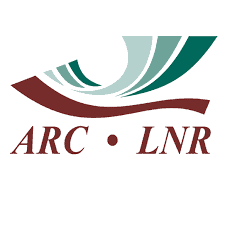Advancing Diagnostic Imaging and Medical Interpretation

Diagnostic Imaging Careers
The Radiologist profession represents a highly specialized medical field focused on diagnostic and interventional imaging, dedicated to diagnosing diseases and injuries using medical imaging techniques such as X-rays, MRIs, CT scans, and ultrasounds to provide critical diagnostic information for patient care.
These medical specialists combine advanced technological expertise with clinical knowledge to detect conditions ranging from fractures and tumors to complex neurological disorders and cardiovascular diseases.
Modern radiologists work in diverse environments—from major hospital systems and outpatient imaging centers to teleradiology platforms and academic research institutions. They also play a vital role in early disease detection, treatment planning, and guiding minimally invasive procedures such as biopsies and catheter placements, contributing significantly to improved patient outcomes across all medical disciplines. This role is part of our Health Care & Community Services career cluster.
This comprehensive guide explores the evolving landscape for diagnostic imaging specialists, detailing the extensive education, specialized skills, and dedication required to succeed in this technology-driven profession while highlighting pathways for career advancement and subspecialty opportunities in various areas of radiological science.
Medical Imaging Industry Overview
The global demand for qualified Radiologists continues to grow as diagnostic imaging remains fundamental to modern medical care, creating consistent need for specialized radiological expertise across healthcare systems. Today’s radiologists are essential specialists in hospitals, outpatient imaging centers, teleradiology firms, and academic institutions. The profession stands at the intersection of cutting-edge technology, clinical medicine, and interpretive expertise.
Several key trends are reshaping the radiology landscape:
- The integration of artificial intelligence has begun transforming image interpretation, offering both assistive tools and workflow enhancements while changing the radiologist’s role
- The growing emphasis on interventional techniques has expanded the therapeutic capabilities of radiologists beyond traditional diagnostic roles
- The increasing focus on subspecialization has created demand for experts in neuroradiology, musculoskeletal imaging, breast imaging, and other focused areas
- The rise of teleradiology has enhanced access to radiological expertise regardless of geographic limitations
- The expansion of advanced imaging modalities continues with refinements in functional MRI, molecular imaging, and hybrid technologies
The field also faces important challenges, including managing increasing imaging volumes, adapting to AI integration, maintaining quality while improving efficiency, and balancing specialized expertise with comprehensive radiological knowledge. As imaging technology continues to advance, radiologists who combine technical excellence with clinical acumen and adaptability remain in high demand across healthcare systems worldwide.
Diagnostic Imaging Job Availability & Average Pay Grade: Global Comparison
Medical Imaging Specialist Jobs Availability by Sector
Radiologist positions offer diverse employment prospects in healthcare settings worldwide, with opportunities in these sectors:
- Hospital Systems: Positions providing comprehensive diagnostic services in general and specialty hospitals
- Outpatient Imaging Centers: Roles in dedicated facilities focused exclusively on diagnostic imaging
- Teleradiology Providers: Remote interpretation positions offering flexibility and diverse caseloads
- Academic Medical Centers: Positions combining clinical practice, research, and teaching
- Private Practices: Opportunities in radiology groups or multispecialty clinics
- Research Institutions: Roles focused on imaging technology development and clinical applications
- Corporate Healthcare: Positions with imaging equipment manufacturers and healthcare technology companies
Popular regions for Radiologist jobs include:
- United States: Strong demand with high compensation, particularly for subspecialists
- United Kingdom: Opportunities within the NHS and private healthcare sector
- Canada: Well-established positions across provincial healthcare systems
- Australia/New Zealand: Growing demand with attractive work-life balance
- European Union: Particularly strong opportunities in Germany, Switzerland, and Scandinavia
- Gulf States: Developing healthcare systems with premium compensation for specialists
- Asia: Expanding specialty care infrastructure in countries like Singapore, Japan, and China
Most positions require completion of diagnostic radiology residency following medical school, with board certification and often subspecialty fellowship training. The path typically involves 9-10 years of post-graduate medical training.
Average Diagnostic Imaging Specialist Salary Comparison (Annual)
| Region | Early Career | Mid-Career | Senior/Specialized |
| USA | $350,000-$450,000 | $450,000-$550,000 | $550,000-$700,000+ |
| UK | £95,000-£150,000 | £150,000-£200,000 | £200,000-£300,000+ |
| Canada | CAD $300,000-$400,000 | CAD $400,000-$500,000 | CAD $500,000-$600,000+ |
| Australia | AUD $350,000-$450,000 | AUD $450,000-$550,000 | AUD $550,000-$700,000+ |
| New Zealand | NZD $300,000-$400,000 | NZD $400,000-$500,000 | NZD $500,000-$600,000+ |
| Europe | €150,000-€250,000 | €250,000-€350,000 | €350,000-€500,000+ |
| Gulf States | $250,000-$400,000 | $400,000-$550,000 | $550,000-$700,000+ |
| Asia | $80,000-$200,000 | $200,000-$300,000 | $300,000-$400,000+ |
Salaries vary significantly based on healthcare system structure, private vs. public sector employment, subspecialty expertise, and regional cost of living. Interventional radiologists typically earn higher compensation due to procedural revenue. Many positions include productivity bonuses, academic appointments, partnership opportunities, or teleradiology flexibility that can substantially enhance total compensation beyond base salary figures.
Diagnostic Imaging Career Potential Grade: ⭐⭐⭐⭐⭐ (Very High)
The career potential for Radiologists is exceptionally strong, with particularly promising advancement opportunities in these areas:
- Subspecialty Expertise: Development of focused expertise in areas like neuroradiology, musculoskeletal imaging, or interventional techniques
- Technological Leadership: Opportunities in implementing and optimizing AI applications and advanced imaging systems
- Interventional Growth: Expansion into therapeutic interventional procedures with clinical and financial advantages
- Teleradiology Innovation: Development of remote interpretation models and global practice expansion
- Academic Leadership: Progression to directorship of radiology departments or imaging research programs
Career advancement typically depends on interpretive excellence, subspecialty expertise, technological adaptability, and leadership capabilities. With appropriate qualifications and experience, radiologists can transition into hospital leadership, academic positions, entrepreneurial imaging center development, or teleradiology leadership with substantial autonomy and compensation.
Essential Skills for Diagnostic Imaging Specialists: Key Requirements
Interpretive Expertise & Clinical Knowledge
- Image Interpretation: Exceptional ability to recognize normal and abnormal findings across imaging modalities
- Anatomical Knowledge: Comprehensive understanding of normal anatomy and variants
- Pathology Recognition: Expertise in identifying disease processes and their imaging manifestations
- Clinical Correlation: Ability to integrate imaging findings with patient history and clinical presentation
- Diagnostic Reasoning: Skills in generating appropriate differential diagnoses from imaging appearances
Technical & Procedural Abilities
- Protocol Optimization: Knowledge of tailoring imaging techniques for specific clinical questions
- Interventional Skills: For some, expertise in image-guided procedures and minimally invasive treatments
- Radiation Safety: Understanding of dose minimization and radiation protection principles
- Imaging Physics: Comprehension of the technical basis for various imaging modalities
- Quality Control: Ability to recognize and address technical limitations and artifacts
Communication & Collaboration
- Report Generation: Excellence in producing clear, concise, and clinically relevant interpretations
- Interprofessional Consultation: Skills in discussing findings with referring clinicians
- Multidisciplinary Participation: Effective contribution to tumor boards and clinical conferences
- Patient Communication: When applicable, ability to explain procedures and results to patients
- Teaching Capability: Skills in educating trainees, technologists, and colleagues
Technology & Innovation Adaptation
- Digital Workflow Mastery: Proficiency with PACS, reporting systems, and electronic health records
- Artificial Intelligence Integration: Understanding of AI tools and their appropriate applications
- Emerging Technology Evaluation: Ability to assess new imaging techniques and implementations
- Continuous Learning: Commitment to updating knowledge with technological advancements
- Informatics Knowledge: Understanding of data management and systems integration
Professional Qualifications
- Education: Medical degree (MD or DO) followed by diagnostic radiology residency and often fellowship training
- Certification: Board certification in diagnostic radiology with maintenance of certification
- Licensing: Medical licensure in practicing jurisdiction with appropriate credentials
- Continuing Education: Ongoing professional development and knowledge updates
- Society Membership: Participation in professional organizations like the American College of Radiology or equivalent national societies
Professionals who combine exceptional interpretive skills with technological adaptability and effective communication are particularly well-positioned for career advancement in radiology. The most successful specialists balance detailed image analysis with broader clinical understanding and collaborative approaches to patient care.
Medical Imaging Career Paths: From Residency to Specialized Practice
Entry-Level Radiology Training Positions
Diagnostic Radiology Resident
- Completing comprehensive training in all imaging modalities
- Building foundational interpretive skills across body systems
- Developing procedural abilities in basic image-guided interventions
- Duration: 4 years post-medical school (after internship)
- Average stipend: $60,000-$75,000 (during training)
Radiology Fellowship Trainee
- Pursuing advanced subspecialty training in a focused area
- Developing specialized interpretive and procedural expertise
- Building connections within subspecialty professional networks
- Duration: 1-2 years following residency
- Average stipend/salary: $70,000-$90,000 (during training)
Junior Staff Radiologist
- Beginning independent practice with more senior oversight
- Establishing personal interpretive approaches and efficiency
- Building confidence across the spectrum of imaging studies
- Average salary range: $350,000-$450,000
Mid-Career Diagnostic Imaging Positions
General Diagnostic Radiologist
- Providing comprehensive imaging interpretation across modalities
- Reading a diverse mix of radiography, CT, MRI, ultrasound, and other studies
- Serving broader community needs in hospital or outpatient settings
- Average salary range: $400,000-$500,000
Subspecialty Radiologist
- Focusing on specialized area such as neuroradiology, body imaging, or musculoskeletal
- Developing advanced expertise in complex interpretations within subspecialty
- Often practicing in larger academic or specialty-focused settings
- Average salary range: $450,000-$550,000
Interventional Radiologist
- Specializing in minimally invasive image-guided procedures
- Performing therapeutic interventions including angiography, embolization, and ablation
- Maintaining more direct patient care relationships than diagnostic colleagues
- Average salary range: $500,000-$600,000
Senior-Level Radiology Leadership Positions
Radiology Department Chair/Chief
- Leading imaging services within hospitals or health systems
- Overseeing clinical operations and quality improvement initiatives
- Managing physician teams and departmental strategy
- Average salary range: $550,000-$700,000
Imaging Center Medical Director
- Directing outpatient imaging facility operations
- Ensuring quality control and protocol standardization
- Managing radiologist scheduling and productivity
- Average salary range: $500,000-$650,000
Radiology Residency Program Director
- Supervising training of future radiologists
- Developing educational curriculum and evaluation systems
- Ensuring program accreditation and trainee success
- Average salary range: $450,000-$600,000
Advanced Radiology Career Opportunities
Teleradiology Entrepreneur
- Developing remote interpretation business models
- Creating flexible work arrangements and global coverage
- Managing radiologist networks and client relationships
- Average income range: $500,000-$1,000,000+ (highly variable)
Radiology Artificial Intelligence Consultant
- Advising on implementation and optimization of AI tools
- Contributing to development and validation of algorithms
- Bridging clinical and technical aspects of AI integration
- Average income range: $450,000-$700,000+ (emerging field)
Corporate Medical Director
- Providing clinical expertise to imaging technology companies
- Guiding product development and clinical applications
- Representing physician perspective in corporate settings
- Average income range: $500,000-$800,000+ (highly variable)
Many radiologists find their career path evolves through a combination of clinical practice, subspecialization, technological adoption, and leadership. While some focus exclusively on image interpretation throughout their careers, others incorporate academic, administrative, entrepreneurial, or technical innovation elements as their interests and opportunities develop.
Radiologist Resume Tips for Diagnostic Imaging Applications
Crafting a compelling radiologist resume requires highlighting both interpretive expertise and technological proficiency. The best resume format for radiologists emphasizes subspecialty knowledge, procedural skills if applicable, research contributions, and quality metrics when available.
Essential Radiology Resume Sections
Professional Summary
- Concise overview of your radiological expertise, subspecialty focus, and key qualifications
- Example: “Board-certified Diagnostic Radiologist with 6+ years of experience specializing in neuroimaging and head/neck radiology. Fellowship-trained at Johns Hopkins with expertise in advanced MRI techniques and CT perfusion imaging. Interpret over 15,000 studies annually with exceptional accuracy and report turnaround time. Committed to combining detailed image analysis with clear, clinically relevant reporting to optimize patient care and support referring physicians.”
Interpretive Experience & Volume
- Studies interpreted annually with breakdown by modality
- Subspecialty expertise and focused experience
- Reporting metrics including turnaround time when favorable
- Participation in peer review and quality improvement
Medical Education & Training
- Medical school, residency, fellowship, and any advanced training
- Board certification and maintenance of certification status
- Specialized courses and technical skills workshops
- Licenses and state registrations where practicing
Procedural Skills (if applicable)
- Image-guided procedures performed with approximate volumes
- Interventional techniques and specialized procedures
- Quality metrics including success rates and complications
- Equipment and technology proficiency
A well-designed CV maker can help organize these elements effectively, but ensure your unique value proposition as a radiologist shines through personalization. When applying for diagnostic imaging positions, pair your resume with a targeted cover letter that connects your specific expertise to the institution’s imaging needs and patient population.
For physicians transitioning into radiology or between subspecialties, emphasize transferable skills, related experience, and specialized training to demonstrate your readiness for the specific imaging environment. Your application letter should highlight your diagnostic acumen and commitment to imaging excellence.
Interview Questions for Radiologists: Preparation Guide
The interview process for Radiology positions typically explores both interpretive expertise and workflow efficiency. Employers seek candidates who combine diagnostic accuracy with productivity and collaborative practice.
Common Radiology Interview Questions and Response Strategies
Interpretive Expertise & Clinical Judgment
- “How would you approach a complex head CT in a trauma patient?”
- Outline your systematic reading approach
- Explain key findings to prioritize and potential pitfalls
- Discuss integration with clinical information
- Share examples of challenging cases you’ve interpreted successfully
- “How do you handle incidental findings on imaging studies?”
- Detail your approach to characterizing incidentalomas
- Explain your decision-making for follow-up recommendations
- Discuss balancing thoroughness with avoiding unnecessary testing
- Share examples of your approach to common incidental findings
Workflow & Productivity
- “Describe how you maintain efficiency while ensuring accuracy.”
- Outline your reading workflow and organization
- Explain strategies for managing interruptions
- Discuss your approach to difficult cases that could impact productivity
- Share specific techniques that have improved your efficiency
- “How do you handle high-volume reading lists during busy periods?”
- Detail your prioritization approach for urgent studies
- Explain techniques for maintaining focus during extended reading sessions
- Discuss recognition of fatigue and strategies to mitigate errors
- Share examples of successfully managing high-volume periods
Technology & Innovation Adaptation
- “How do you view the integration of AI in radiology practice?”
- Demonstrate balanced understanding of AI capabilities and limitations
- Explain how you would incorporate AI tools in your workflow
- Discuss the evolving role of radiologists in an AI-enhanced environment
- Share any experience with AI implementation or research
- “How do you stay current with rapidly advancing imaging technology?”
- Detail your approach to continuous learning
- Explain how you evaluate new techniques before adoption
- Discuss your process for implementing new protocols
- Share examples of successfully incorporating new technologies
Radiology Interview Preparation Tips
- Research the Specific Practice Environment
- Understand the case mix and imaging volume
- Research patient demographics and clinical specialties served
- Identify the group’s practice model and call structure
- Review their technology platform and available advanced modalities
- Review Representative Cases
- Prepare to discuss interesting or challenging cases you’ve interpreted
- Be ready to explain your approach to common emergent findings
- Consider how you handle diagnostic dilemmas and equivocal cases
- Refresh knowledge on subspecialty areas relevant to the position
- Understand Technical Aspects of Their Practice
- Research their PACS and reporting systems if possible
- Prepare to discuss teleradiology capabilities if relevant
- Consider workflow questions related to their specific setting
- Review quality metrics typical for their practice type
- Develop Questions About the Position
- Prepare inquiries about study volume and modality mix
- Develop questions about call responsibilities and distribution
- Consider asking about relationships with referring physicians
- Plan questions about career development and advancement
Successful radiology interviews require demonstrating both diagnostic acumen and practical efficiency, as employers seek candidates who can provide accurate interpretations while maintaining productivity in demanding healthcare environments.
Latest Advancements in MRI and CT Scan Technology: Staying Current in Practice
Maintaining clinical excellence in radiology requires continuous engagement with rapidly evolving imaging technologies, interpretive approaches, and clinical applications. Contemporary diagnostic imaging specialists must balance adoption of innovation with evidence-based practice.
Emerging Imaging Technologies
- Advanced MRI Techniques: Diffusion tensor imaging, functional MRI, MR spectroscopy, and quantitative applications
- CT Innovations: Dual-energy/spectral CT, ultra-high-resolution techniques, and radiation dose reduction technologies
- Hybrid Imaging: PET/MRI integration and multimodality fusion capabilities
- Molecular Imaging: Targeted contrast agents and radiopharmaceuticals for specific pathologies
- Portable and Point-of-Care Solutions: Compact ultrasound, mobile X-ray, and bedside imaging innovations
Digital Workflow Enhancements
- Advanced Visualization: 3D rendering, multiplanar reformations, and cinematic rendering techniques
- Structured Reporting: Standardized templates and quantitative result integration
- Natural Language Processing: Automated report analysis and finding extraction
- Clinical Decision Support: Integrated appropriateness criteria and recommendations
- Remote Reading Solutions: Enhanced teleradiology platforms and collaborative interpretation tools
Artificial Intelligence Applications
- Computer-Aided Detection: Automated identification of potential abnormalities
- Diagnostic Assistance: AI tools for specific findings like pulmonary nodules or intracranial hemorrhage
- Workflow Prioritization: Algorithms for triaging urgent findings
- Image Enhancement: Noise reduction, artifact correction, and resolution improvement
- Quantitative Analysis: Automated measurements and longitudinal comparisons
Successful radiologists develop systematic approaches to evaluating and incorporating new technological developments, balancing early adoption of promising innovations with appropriate caution regarding unproven technologies. Participation in professional societies, regular conference attendance, and critical reading of radiological literature are essential for maintaining current knowledge in this rapidly evolving specialty.
Trends in Radiology and Interventional Imaging: Future Directions
The field of radiology continues to evolve through technological innovation, practice model changes, and shifting healthcare delivery systems. Several key trends are shaping the future practice landscape for diagnostic imaging specialists.
Artificial Intelligence Integration
- Workflow Enhancement: AI tools for worklist prioritization and reading efficiency
- Diagnostic Assistance: Algorithm-based detection and characterization of findings
- Quality Improvement: Automated quality checks and peer review assistance
- Predictive Analytics: Advanced pattern recognition for disease progression and outcomes
- Radiomics and Quantitative Imaging: Extraction of data beyond visual interpretation
Value-Based Imaging
- Appropriateness Emphasis: Focus on reducing unnecessary imaging studies
- Outcomes Measurement: Linking imaging findings to patient outcomes
- Direct Results Communication: Increased radiologist interaction with patients
- Consultative Role Enhancement: Positioning radiologists as imaging consultants
- Cost-Effectiveness Analysis: Demonstrating the value of optimal imaging strategies
Practice Model Evolution
- Subspecialization Trend: Continuing movement toward focused expertise
- Teleradiology Expansion: Geographic flexibility and 24/7 coverage solutions
- Interventional Growth: Increasing therapeutic role through minimally invasive procedures
- Multidisciplinary Integration: Deeper involvement in disease-specific care teams
- Hybrid Practice Models: Combining on-site presence with remote interpretation capabilities
As these trends reshape radiological practice, successful diagnostic imaging specialists will need to balance technical excellence with clinical value, incorporate artificial intelligence while maintaining interpretive expertise, and adapt to evolving healthcare delivery models while preserving the radiologist’s central role in diagnostic medicine.
Explore More in This Industry
Looking for other career options in this field?
👉 View more Health Care & Community Services careers.
Resources & Organizations
These featured organizations play an active role in advancing pest management, scientific research, and agricultural development through education, policy, and innovation.

The African Association of Insect Scientists (AAIS) is a professional body committed to strengthening entomological science across Africa through research, education, and pest management innovation.
Visit Site →

The New Zealand Plant Protection Society promotes the science and practice of plant protection through conferences, publications, and collaboration with growers, researchers, and pest control professionals.
Visit Site →

The Agricultural Research Council of South Africa – Plant Protection leads national research efforts in crop protection, biosecurity, pest diagnostics, and integrated pest management (IPM) for sustainable agriculture.
Visit Site →
These organizations are featured for their outstanding contributions to pest management science, training, and global agricultural development.
This Radiologist Career Guide provides general information about the profession globally. Specific requirements, compensation, and opportunities may vary by region, healthcare system, and individual qualifications. Always research current conditions in your target sector when making career decisions.
